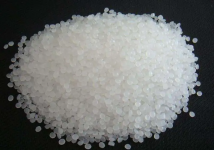read: 689 time:2025-07-17 13:50:38 from:化易天下
When dealing with stubborn oil-based paint stains or needing to clean up after a painting project, many people wonder, will acetone remove oil-based paint? This question is common among both DIY enthusiasts and professionals alike. In this article, we will delve into whether acetone is effective for this purpose, how it works, and the best practices to follow if you decide to use it.
Acetone, a colorless and volatile liquid, is a powerful solvent that is widely used in various industrial and household applications. Its ability to dissolve a wide range of organic compounds, including oils, greases, and some types of paint, makes it a popular choice for cleaning and stripping tasks. When considering will acetone remove oil-based paint, it's important to recognize that acetone is effective due to its polar nature, which allows it to break down the molecular bonds in oil-based paints.
Oil-based paints are known for their durability and water-resistant properties, which make them a preferred choice for many painting projects. However, these same qualities can make the paint challenging to remove once it has dried. Acetone can be particularly effective in removing oil-based paint because it penetrates the paint's surface and breaks down the oils and resins that give the paint its adherence and finish. By dissolving these components, acetone allows the paint to be wiped away more easily.
If you’re contemplating using acetone to remove oil-based paint, it’s essential to follow some best practices to ensure effectiveness and safety:
Test on a Small Area First: Before applying acetone to a large surface, test it on a small, inconspicuous area. This ensures that the acetone won’t damage the underlying material or cause unwanted discoloration.
Use Protective Gear: Acetone is a strong solvent that can be harmful if it comes into contact with your skin or if inhaled in large quantities. Always wear gloves and work in a well-ventilated area. Consider wearing a mask if you are working with a large amount of acetone.
Application Process: Apply acetone using a clean cloth or brush, and allow it to sit for a few minutes to penetrate the paint. After this, gently scrub the area with a soft cloth or sponge to remove the dissolved paint. Repeat the process if necessary for thicker layers.
Rinse and Clean: After removing the paint, it’s important to thoroughly clean the area with soap and water to remove any acetone residue, which can be harmful to certain surfaces and materials over time.
While acetone can be very effective in removing oil-based paint, it’s not always the best option, especially for more delicate surfaces. Other solvents, such as mineral spirits or paint thinners, may be less harsh and could be more appropriate depending on the situation. It's also important to consider environmental factors and local regulations, as acetone is a hazardous chemical that must be disposed of properly.
So, will acetone remove oil-based paint? The answer is yes, acetone is a highly effective solvent for removing oil-based paint from various surfaces. However, due to its potency, it should be used with caution, and always with the proper safety measures in place. By understanding the chemical properties of acetone and following the recommended steps for its use, you can successfully remove oil-based paint and achieve the desired results in your cleaning or restoration project.

Jincheng Petrochemical's 300000 ton polypropylene plant successfully trial production, 2024 polypropylene market analysis

The ABS market remains sluggish, what is the future direction?

Market differentiation of bisphenol A intensifies: prices rise in East China, while prices generally decline in other regions

The production method and process flow of silicone acrylic lotion, and what are the common raw materials